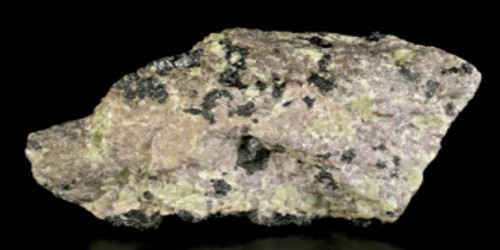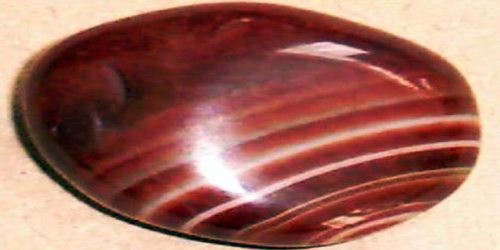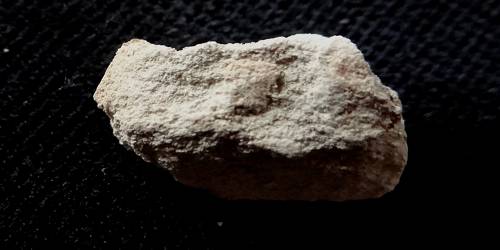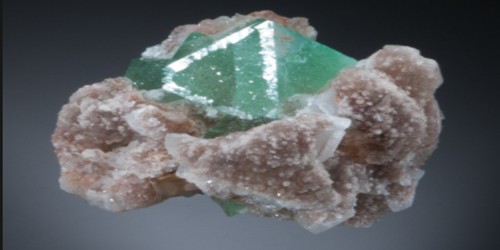Osmium is a lustrous, silvery metal that belongs to the platinum group of metals. It has the chemical symbol Os and the atomic number 76. It is the densest metal known, but only by the thinnest of margins. It is a bluish-white transition metal in the platinum group that is found as a trace element in alloys, primarily in platinum ores. Water and acids have no effect on it, but it dissolves in molten alkalis.
Osmium is the element with the highest density found in nature. It has a density of 22.59 g/cm3 when measured experimentally using x-ray crystallography. Its alloys with platinum, iridium, and other platinum-group metals are used by manufacturers to make fountain pen nib tipping, electrical contacts, and other applications that require extreme durability and hardness.
Osmium is a rare element that occurs naturally in the Earth’s crust. Osmium-rich ores include osmiridium and iridosmine, with osmiridium being the most common. It is one of the rarest elements in the Earth’s crust, accounting for only 50 parts per trillion (ppt). It is estimated to be present in the universe at 0.6 parts per billion, making it the rarest precious metal.
Properties
Osmium is the densest stable element, with a blue-gray tint; it is roughly twice as dense as lead and slightly denser than iridium. Density calculations based on X-ray diffraction data may produce the most reliable data for these elements, yielding a value of 22.587±0.009 g/cm3 for osmium, which is slightly denser than the 22.562±0.009 g/cm3 for iridium; both metals are nearly 23 times as dense as water and 1+16 times as dense as gold.
- Atomic number: 76
- Atomic mass: 190.2 g.mol -1
- Electronegativity according to Pauling: 2.2
- Density: 22.5 g.cm-3 at 20°C
- Melting point: 3045 °C
- Boiling point: 5027 °C
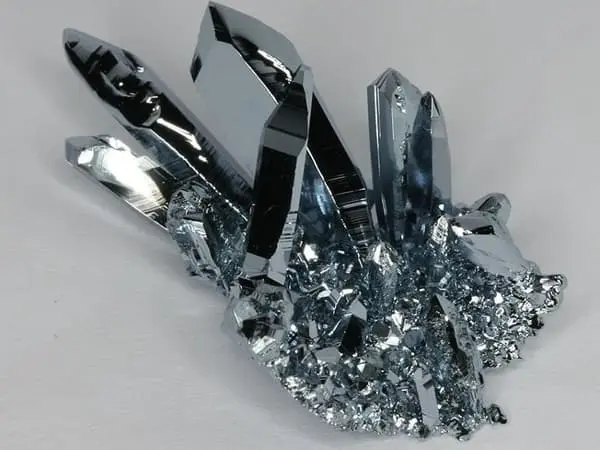
Osmium is a hard but brittle metal with a lustrous appearance even at high temperatures. It is extremely compressible. Consequently, its bulk modulus is extremely high, reported to be between 395 and 462 GPa, rivaling that of diamond (443 GPa). Osmium has a moderately high hardness of 4 GPa. Solid osmium is difficult to machine, form, or work due to its hardness, brittleness, low vapor pressure (the lowest of the platinum-group metals), and extremely high melting point (the fourth highest of all elements, after carbon, tungsten, and rhenium).
Occurrence
With an average mass fraction of 50 parts per trillion in the continental crust, osmium is the least abundant stable element in the Earth’s crust. It is most commonly found alloyed with other platinum metals, from which it is commercially recovered. Iridosmine and osmiridium are the most important ores. Iridosmine is a rare mineral that can be found in Russia, North and South America. Each year, less than 100 kg is produced. The metal, which is difficult to produce, is in short supply.
Osmium is found in nature as an uncombined element or in natural alloys, particularly iridium–osmium alloys, osmiridium (iridium rich), and iridosmium (osmium rich). Platinum group metals occur in nickel and copper deposits as sulfides (i.e., (Pt,Pd)S), tellurides (e.g., PtBiTe), antimonides (e.g., PdSb), and arsenides (e.g., PtAs2); in all of these compounds, platinum is exchanged by a small amount of iridium and osmium. As with the other platinum group metals, osmium can be found naturally in alloys with nickel or copper.
The Bushveld igneous complex in South Africa has the largest known primary osmium reserves, but the massive copper-nickel deposits near Norilsk in Russia and the Sudbury basin in Canada are also important osmium sources.
Uses
Osmium has only a few applications. It is used in the production of extremely hard alloys for fountain pen tips, instrument pivots, needles, and electrical contacts. It is also used as a catalyst in the chemical industry.
The metal is used as a catalyst in a few alloys and in the industry. Because of its extreme hardness and corrosion resistance, it was once found in the nibs of high-quality fountain pens, compass needles, long-life gramophone needles, and clock bearings.

